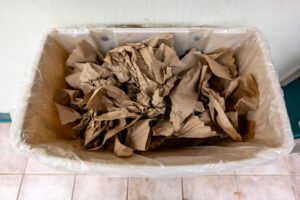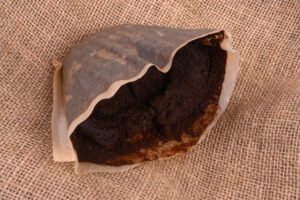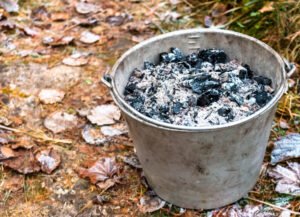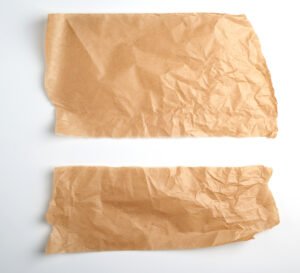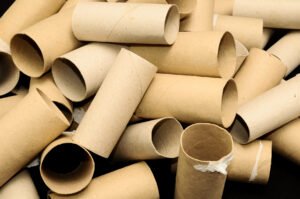Be it from amazon shipment cartons, food or drink packages, or shoe boxes, we all have cardboard piled up at our homes. And it mostly ends up in the trash bin. But have you ever wondered if you could compost this cardboard? If not, you must! And we will tell you how!
Key Takeaways
- Cardboard can be composted as it contains carbon, making it an excellent brown material for composting and nutrient-rich humus for crops.
- It also absorbs excess moisture from the compost pile and keeps it from leaking. It has many other benefits, which you can find in this article.
- You can compost cardboard via traditional hot or cold composting methods and the Lasagna method, which you can learn about below!
- It’s best to avoid composting cardboard containing plastic, or shiny material should not be composted. Continue reading to learn more amazing tips for composting cardboard.
How To Compost Cardboard?
There are two effective methods to compost cardboard; the traditional method and the Lasagna method. The process you choose for composting depends on how quickly you wish to get the final compost and the time you have to monitor the compost bin.
Where lasagna composting takes time, traditional methods require a lot of maintenance. Nonetheless, both ways are excellent for composting.
For composting cardboard, choose a bin that perfectly fits your materials. Furthermore, ensure that the bin has a tight lid.
Traditional Composting Method
The traditional method of composting cardboard is popular and widely used because it produces compost quickly. Let’s look into the process of composting.
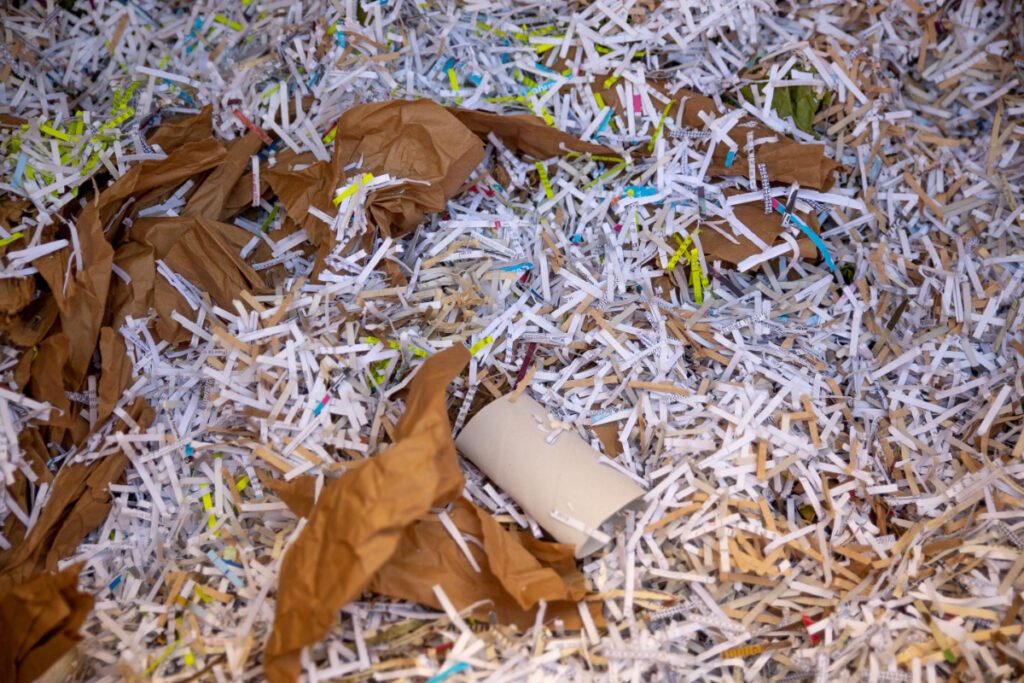
Step 1. Shred Cardboard into Pieces
Collect all the cardboard boxes like large carton boxes, shoe boxes, egg cartons, pizza boxes, cereal boxes, juice packaging, etc.
Then, shred them into fine pieces using a scissor or paper shredder. Composting cardboard as a whole may block air and oxygen flow, slowing down the process.
Also, you must remove stickers, tapes, or labels from the cardboard. You can do this after shredding the cardboard or soaking them in water.
Soaking the cardboard pieces with the help of a liquid detergent would help cut them into small pieces easily.
Step 2. Add the Brown Material to the Bin
Prepare a 4-inch layer of bed with shredded cardboard and paper at the bottom of the compost bin. Then follow it with other materials like dried leaves, ash, straw, etc.
Brown materials are a great carbon source, acting as a food source for the microbes in your compost bin.
C: N ratio in cardboard is 200:1, which makes it an excellent brown composting material.
Step 3. Prepare a Layer of Greens
Now it’s time to make a firm, 4-inch layer of bed with green materials over browns. It includes food scraps, kitchen waste like fruit and vegetable peels, yard waste like grass clippings, cow dung, etc.
Green materials are rich in nitrogen and help the microbes grow and multiply quickly, thus breaking down the stock faster.
Step 4. Repeat the Layers
Repeat the green and brown layers alternatively until the compost bin is full. Once done, cover it with a firm 2-3 inch layer of soil.
Step 5. Water the Compost Pile
The compost pile should be moist enough to let the microbes work faster. So, add enough water to dampen the heap.
The ideal moisture content in a compost pile is 40-60%. If there’s excess water, add more cardboard to balance it.
Step 6. Maintain the Compost Pile
Check your pile every seven days to observe its condition. And remember to add the ingredients as required.
Moreover, turn the pile with a shovel or pitchfork to ensure it gets plenty of oxygen. It helps in the even distribution of moisture and creates a healthy environment for microbes to thrive.
Once you are done with the composting process, your compost will turn into fine manure in 6-8 months and can be used in your garden.
Lasagna Method for Composting
If you feel that shredding cardboard is complex or you cannot maintain a compost bin, there is an alternative method to compost cardboard; the Lasagna method.
Although time-consuming, the lasagna method or sheet composting is easier and does not require much labor. Let’s see how to do it effectively with the following procedure.
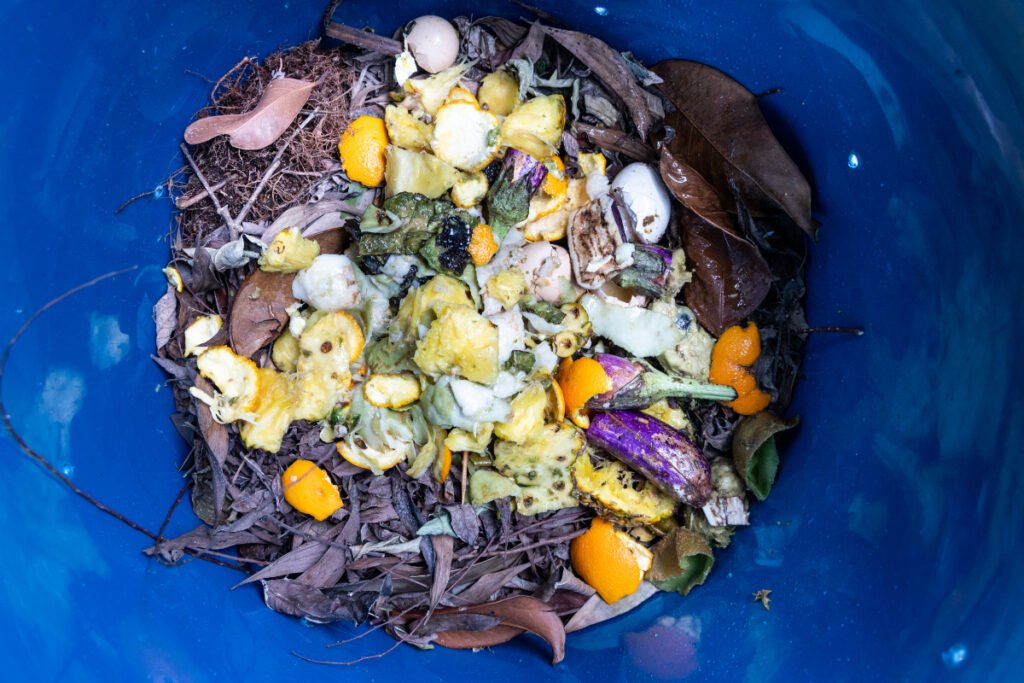
Step 1. Arrange the Cardboard Sheet in the Bin
First things first, take the cardboard and paper sheets and lay them in your compost bin. Then, spray some water to dampen the sheets and cover them with a firm layer of soil.
Step 2. Add Some Greens and Browns
Now, add some green materials like kitchen waste, yard waste, and food scraps to the top of the soil.
Then add the dry, carbon-rich brown material like wood chips, dry leaves, and straw. These materials act as food for microbes and an energy source for them.
Step 3. Repeat the Process
Add the rest of the composting materials alternatively to fill the compost bin.
This method does not require adding water to the compost pile or turning it. Also, you cannot add more materials frequently.
Though this method is easy to set up and maintain, it takes longer to produce the finished compost.
Types Of Cardboard Used for Composting
Most types of cardboard are made of compostable packaging that decomposes well. But some cardboard might contain non-degradable materials too. So you must know which cardboards are suitable to compost.
Based on their compost-friendly characteristics, cardboards are classified majorly into three types:
- Corrugated Cardboard: This cardboard type is generally used for packing and is considered the best type for composting.
- Flat Cardboard: Flat cardboard that comes as a shoebox, cereal box, pizza box, juice packaging, etc., can be composted. But make sure that the pizza box or food wrap is not greasy, as the bacteria in the compost pile hate grease.
- Wax-Coated Cardboard: Such cardboard materials are coated with wax. It includes coated paper cups, milk packs, pet food bags, etc. The wax in this cardboard makes it difficult to compost.
Furthermore, any cardboard with a shiny coating or plastic wrap should be avoided for composting as it might contain plastic or other polymers.
You can soak the cardboard box and see if you can remove the plastic coating before throwing it into your compost bin.
Benefits of Composting Cardboard
Composting cardboard comes with incredible benefits. Here are a few you should know for sure.
- As cardboard is a rich carbon source, it helps balance the organic-rich greens in the compost pile.
- Cardboard offers nutrient-rich organic matter that will be useful for growing plants.
- Cardboard helps to enhance the airflow in the compost pile.
- Cardboard soaks excess moisture from the compost heap, preventing it from becoming compact and leaking.
- It does not release any harmful residues and is eco-friendly.
- Carbon present in cardboard helps in the easy decomposition of the compost.
- Cardboard (especially the thick corrugated cardboard) is known for its insulation property and is considered best for composting. In winter, it helps the pile hold the heat.
Additional Tips For Composting Cardboard
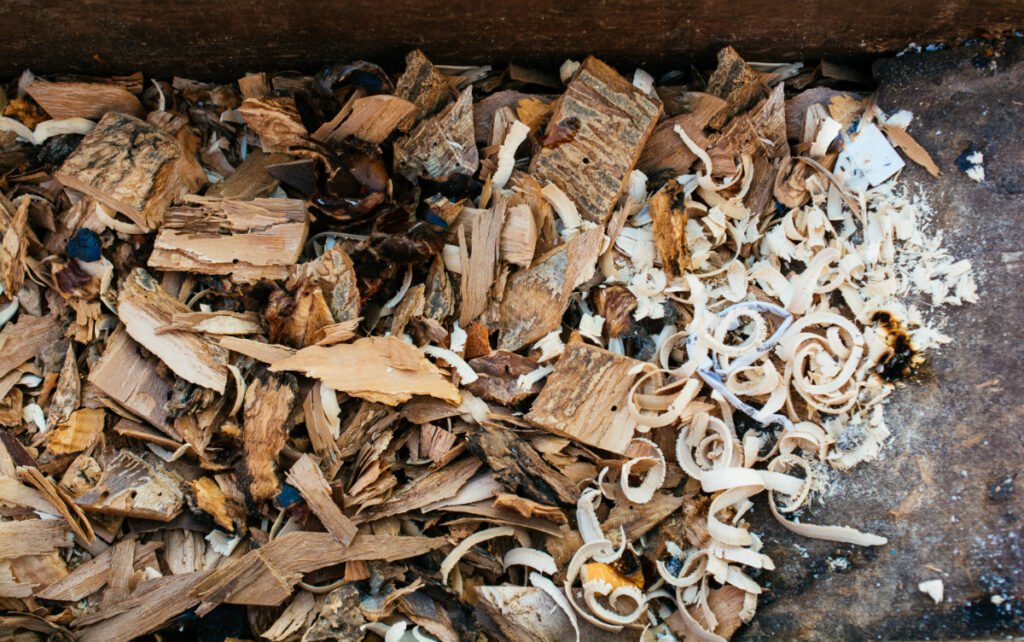
Here are some useful tips you must follow to compost cardboard effectively.
- Shred the cardboard into small pieces to accelerate the decomposition.
- Before composting cardboard, remove the labels, tapes, or staple pins because they won’t degrade.
- Use rainwater while composting as its pH is neutral.
- To know the water content in your compost pile, collect some composting material and squeeze it within your palms. If it feels dry, you need to add water, and if the water leeks, add more shredded cardboard.
- Turn the composting pile weekly to prevent it from matting.
- To speed up your composting process, avoid using wax-coated cardboard.
Can Cardboard be Used Directly in the Garden?
As cardboard is rich in carbon, it’s not mandatory to reuse it only through composting. Here are a few ways to use cardboard directly in the garden.
1. As a Sheet Mulch: When you start gardening, clearing the land and removing the weeds is extremely laborious. You can use cardboard to avoid this because it acts as a sheet mulch, inhibiting the weeds from growing.
Simply clear the land and lay down cardboard sheets across your garden. Water the cardboard to keep it intact. You may also add compost over the sheets to enrich the soil.
2. Use It for Suppressing Weeds: Using cardboard sheets in your cropland would suppress the weeds by preventing sunlight. Lay the cardboard sheets with some holes around your plants. These holes will help the plants receive oxygen and water.
3. Seed Starter Pots: Have you ever seen those tiny pots made of coir or peat for sowing seeds? These can be altered by using toilet paper rolls, paper towel rolls, or any cardboard which can be bent or rolled.
To make the seed starter pots, you need to cut the cardboard roll at one corner, turn it to the bottom, and seal it with glue.
Then, fill the roll with soil and place your seeds. Once the saplings grow to the 3-leaf stage, you can plant them in the soil along with the planter.
How long does cardboard take to compost?
It generally takes 6-8 months for the cardboard to decompose completely. However, the decomposition time depends on the type of cardboard used. Corrugated cardboard is considered the best for composting as they degrade quickly.
Is it better to recycle or compost cardboard?
Composting cardboard is considered better than recycling as it is environmentally friendly. It also helps control methane emissions and reduce carbon footprint in the environment.
Can you compost cardboard with ink?
Composting cardboard with ink is possible, but only when it is water-based. Few manufacturers, especially for making shiny cardboard, still use petroleum-based inks that contain heavy metals and are harmful to the compost. Therefore, it is best to avoid cardboard with ink for composting.
Can you compost waxed cardboard?
No. It is not ideal to use waxed cardboard for composting as the wax coating may contain chemicals, some processed ingredients, and plastic coverings which might not decompose entirely.
Can you compost colored cardboard?
Only use brown or plain cardboard without any dyes. Avoid colored cardboard, as it might contain some heavy metals. Although modern-day inks are made with vegetable dyes, you cannot assure what is used on your cardboard packaging unless it is mentioned.
Is cardboard brown or green compost?
Cardboard is a brown composting material because it is rich in carbon and serves as feed for the bacteria in the bin. The carbon-nitrogen ratio in cardboard is 200:1, and cardboard helps balance the organic greens present in the compost pile.
So, now we know that composting cardboard is a great way to manage waste at your home. So whenever you have any cardboard left after unboxing, remember to add it to your compost bin. And, after you’ve composted cardboard, if you have any questions about composting paper towels, we’ll walk you through it.


